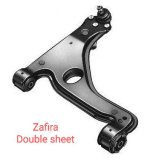Dear community, I've bended and changed front arms four times for two years! It is annoying.
Before Panda I've had an Opel (vauxhall) Zafira, and it's hardware was way more stronger.
Maybe someone knows how to strengthen them?
Before Panda I've had an Opel (vauxhall) Zafira, and it's hardware was way more stronger.
Maybe someone knows how to strengthen them?




